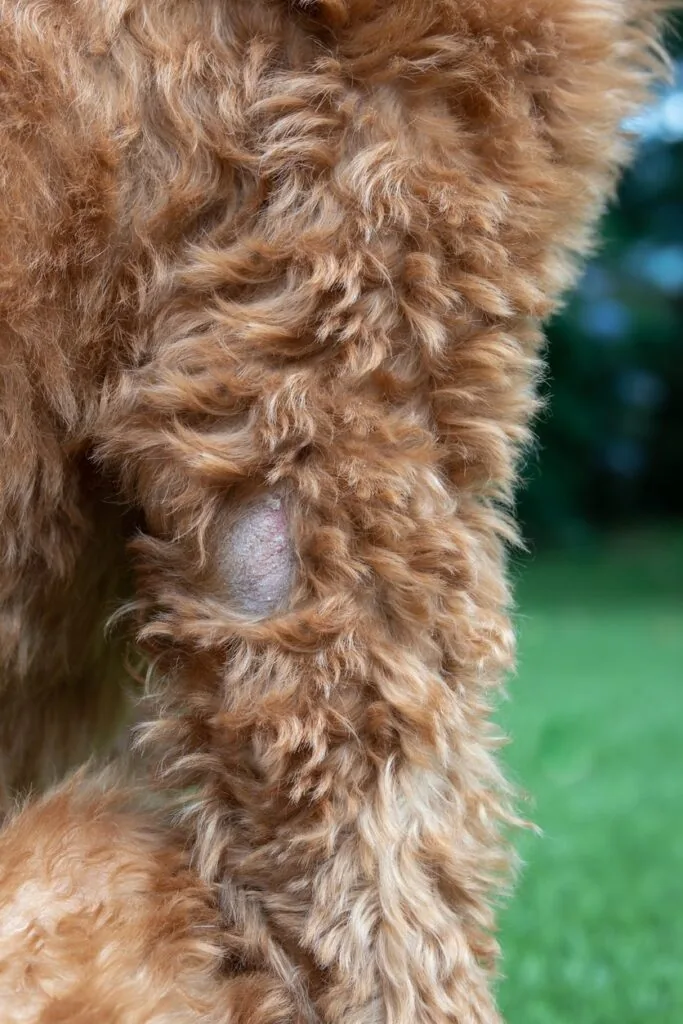6 Tips to Help with Your Dog’s Dry Skin

6 Tips to Help with Your Dog’s Dry Skin
When your dog has dry skin, you are probably both not comfortable. Pets with dry skin can scratch a lot, whine and fuss, or even pull out their hair due to overgrooming. Dry skin can be just as hard on you as the owner since you are probably stressed out about your dog’s discomfort.
Dry skin can be the gateway for skin infections and other kinds of conditions that you will want to avoid. Thankfully, there are some easy tips that you can use to make sure that your dog does not have to suffer from dry skin all the time. Using this guide will help you to make your dog feel its best and keep dry skin at bay.
Tips to Help Your Dog with Dry Skin
Dry skin is a common problem among dogs, especially when the air is drier. Dry skin can cause your dog to feel itchy and uncomfortable, and can even lead to skin infections if left untreated. Fortunately, there are several things you can do to help your dog with dry skin.
1. Don’t Wash Your Dog Too Much
Many owners wash their pets with shampoo too frequently in an effort to keep them happy and healthy. Dogs do not need to be washed every time they get dirty, and you will be surprised at just how easy it can be to brush away dirt from your pet’s coat. In addition, washing your pet with harsh shampoos or cheap shampoos can lead to skin irritation that you are trying to avoid.
Wash your pet every couple of weeks at most, and be sure that you don’t use low-quality shampoo when you do so. Using products that are pH-balance for dogs is a must, and you should be sure that you dry your dog thoroughly after you wash them as well.

2. Avoid Time Outside in the Cold
If you live in a place that gets very cold weather, you should avoid leaving your dog outside for extended periods of time in the cold. You might want to avoid walking your dog outside for long periods or taking them to the dog park when it’s really chilly. The cold makes the air very dry, and this can impact our pet’s skin health.
Combine dry and cold air with moisture from snow or rain, and your dog might be exposed to the right conditions to get a fungal or bacterial condition. Make sure that you apply the same logic if you live in a very dry and arid place as well. The desert can be just as tough on your dog’s skin as the snow and the cold.
3. Make Sure to Feed Quality Kibble
If your dog has been struggling with dry skin, it might be due to their food. Feeding high-quality kibble is important for your dog’s overall well-being, and it can make a big impact on their skin health as well. If you think that your dog’s food is the reason for their dry skin, you should make a gradual switch to another formula from a quality brand. Allergies to foods can cause dry skin as well, so you might resolve two problems at once by making a food upgrade or change.
Always be sure that your pet is not eating a bunch of human food each day and that you are not feeding too many dog treats, either. These added foods can lead to stomach upset and skin health problems that can be avoided if you just stick to a regular feeding plan that only includes a well-balanced kibble.
4. Rule Out Parasites
Parasites like mites and fleas can lead to dry and itchy skin, and these little invaders might be the reason for your dog’s discomfort. You might only notice dry skin in the early days of this kind of infestation, which is why some pet owners are surprised to find out that their pet is loaded with fleas they didn’t know about. Taking your dog to the vet can be a good way to rule out these kinds of infestations and to get your pet onto a preventative protocol to keep them away for good.
Parasites are more common in some parts of the world than others, but that does not mean that your dog cannot get fleas or mites in your area. Tall grass and wooded areas are more likely to bring your dog into contact with these kinds of parasites. Avoiding walking and playing in these areas can help keep parasites from being an issue for you and your dog as well.
5. Use a Humidifier at Home
Sometimes having the heat on or the fireplace going during the winter can really dry out the air in your home. You might notice that your skin is drier than usual as well, which means that your pet could be impacted in the same way. A humidifier can make a huge impact on the moisture content of the air in your home and make you and your pet much more comfortable.
This is not an expensive item to buy, and you can keep this device in all of the places in your home where dry heat might be making the air too dry for comfort.
6. Feed a Supplement
There are many supplements that are made to be poured over your dog’s food that should help impart more fat to your dog’s diet. These supplements often contain omega-3 and omega-6 fatty acids, which are great for coat and skin health. Make sure that the supplements that you are getting are from a reliable company, as these products are not all created equal. Supplementation might not be the full solution for your pet’s dry skin, but it can sometimes help support their overall well-being quite nicely.
Dry Skin in Dogs Can be Resolved Readily in Most Cases
If your dog is suffering from dry skin, you might not be sure what to do. Thankfully, this guide will give you lots of great tips to help you to get your dog’s skin back to its former healthy condition. Make sure that your dog is getting everything they need in their diet, and be cautious about bathing them too often. If you are not sure what your dog needs, you can always go to the vet to get their support in diagnosing the reason for your pet’s dry skin problems.
If your dog is struggling with dry skin in Chicago, IL, the expert veterinary team at West Loop Veterinary Care are here for you! Call us today at our West Loop location (312)421-2275 or our Streeterville location (312) 766-5959.
West Loop:
(312) 421-2275
Streeterville:
(312) 766-5959
